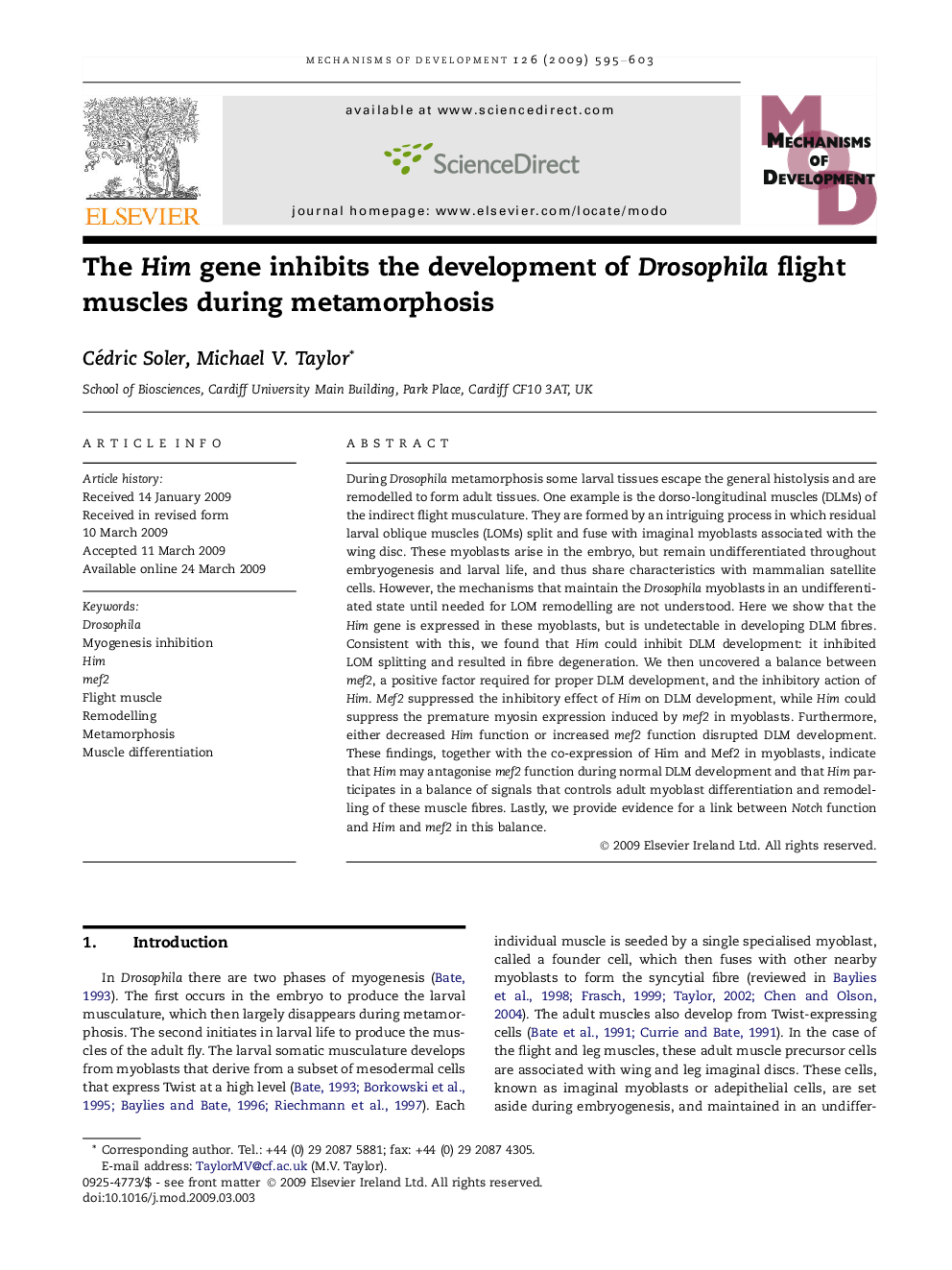| Article ID | Journal | Published Year | Pages | File Type |
|---|---|---|---|---|
| 2195076 | Mechanisms of Development | 2009 | 9 Pages |
During Drosophila metamorphosis some larval tissues escape the general histolysis and are remodelled to form adult tissues. One example is the dorso-longitudinal muscles (DLMs) of the indirect flight musculature. They are formed by an intriguing process in which residual larval oblique muscles (LOMs) split and fuse with imaginal myoblasts associated with the wing disc. These myoblasts arise in the embryo, but remain undifferentiated throughout embryogenesis and larval life, and thus share characteristics with mammalian satellite cells. However, the mechanisms that maintain the Drosophila myoblasts in an undifferentiated state until needed for LOM remodelling are not understood. Here we show that the Him gene is expressed in these myoblasts, but is undetectable in developing DLM fibres. Consistent with this, we found that Him could inhibit DLM development: it inhibited LOM splitting and resulted in fibre degeneration. We then uncovered a balance between mef2, a positive factor required for proper DLM development, and the inhibitory action of Him. Mef2 suppressed the inhibitory effect of Him on DLM development, while Him could suppress the premature myosin expression induced by mef2 in myoblasts. Furthermore, either decreased Him function or increased mef2 function disrupted DLM development. These findings, together with the co-expression of Him and Mef2 in myoblasts, indicate that Him may antagonise mef2 function during normal DLM development and that Him participates in a balance of signals that controls adult myoblast differentiation and remodelling of these muscle fibres. Lastly, we provide evidence for a link between Notch function and Him and mef2 in this balance.
